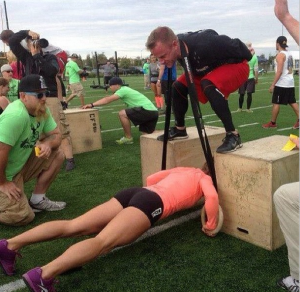Volume giveth, and volume taketh away
A few weeks ago Dan Pope put out a very interesting article:
“HOW TO INCREASE YOUR RISK OF INJURY BY 7000%”
I suggest everyone click on that link and read the article. The premise is simple, researchers studying elite rugby player found that performing too much exercise at any given time increases risk of injury. In this particular study they were able to quantify a threshold of volume for these rugby players that if crossed rendered them 70x or 7000% more likely to incur a non contact soft tissue injury.
While this particular studies done on rugby players isn’t a one to one correlation to what we do in the gym. It is not hard to see that the fundamental principle of this study could be applied to those of us pursuing recreational or competitive fitness goals. Now the flip side of this is the researchers also confidently stated that greater intensity and volume produced more physically and mentally prepared athletes. Or put more simply improved the chance of getting “Results” the hard work involved in training.
So what’s the answer?
How much is too much?
Where is the line that I shouldn’t cross to give me optimal results without injuries?
The answer is we don’t know, and the reality is most of us don’t need to get close to that line if we’re not professional exercisers or professional athletes. Maybe one day someone will do a study of this nature in the CrossFit world and try to quantify the optimal volume threshold for CrossFit. That said here’s my advice if you feel like you need to do more:
Focus on practice, and movement virtuosity over heaps of mindless work. A common mistake folks make when they are in the novice stage of training (typically 1-3 years) is trying to do more work instead of making the work they’re already doing better. Spending an hour or two a week perfecting your kip swing or drilling you pulling positions in the clean will trump slogging through a 60 minute workout with 100 pull-ups and 100 heavy squat cleans any day.
Match training time with purposeful recovery time. A typical training session last 60-90 minutes and for some the rest of their day revolves around sitting at a desk at work and laying on the couch at home. I always recommend you match your training time with purposeful recovery time. This could be more active recovery modes like walking, hiking, casual bike riding, swimming, stretching, and meditating. Or more passive modes like ice baths, contrast showers, massages, or soft tissue work. For most of us this means we train hard 3-5 hours a week and match that with 3-5 hours of non stressful activity. It’s also worth mentioning that good nutrition and good sleep should be the foundation of all this as it “amplifies” what you do in the gym. While poor sleep and poor eating habits limit the results of your hard work in the gym.
Those are the big ones for me. If you can do these two simple things then you’re likely safe to add some additional work volume to your weekly routine. For those that choose to train multiple times a day with no thought or purpose to recovery practices. And / or those that beat themselves down with mindless work without a sound foundation of good movement just know it’s not if but when you’ll be sidelined with an injury.
Coach Wes

